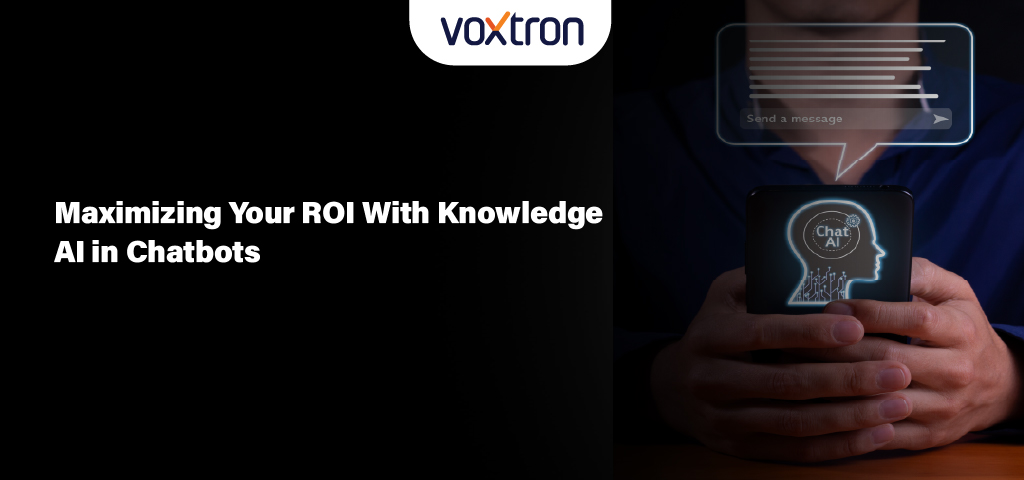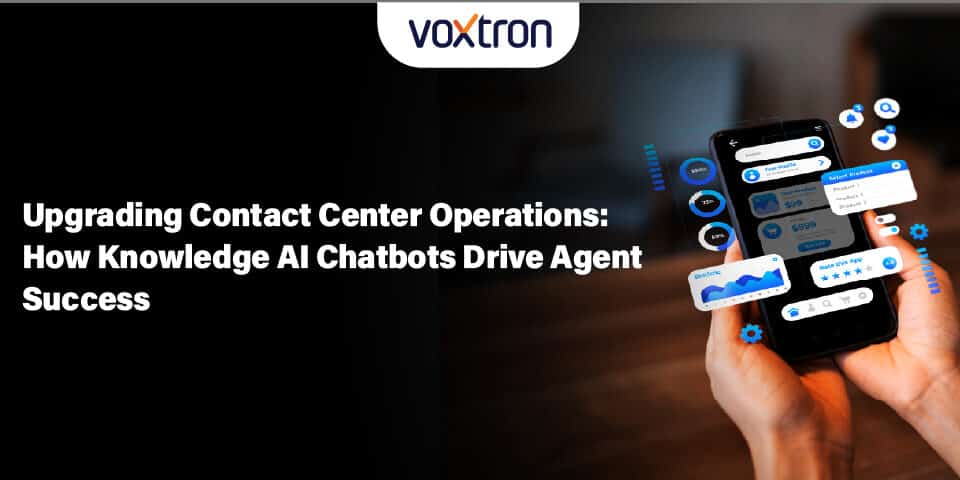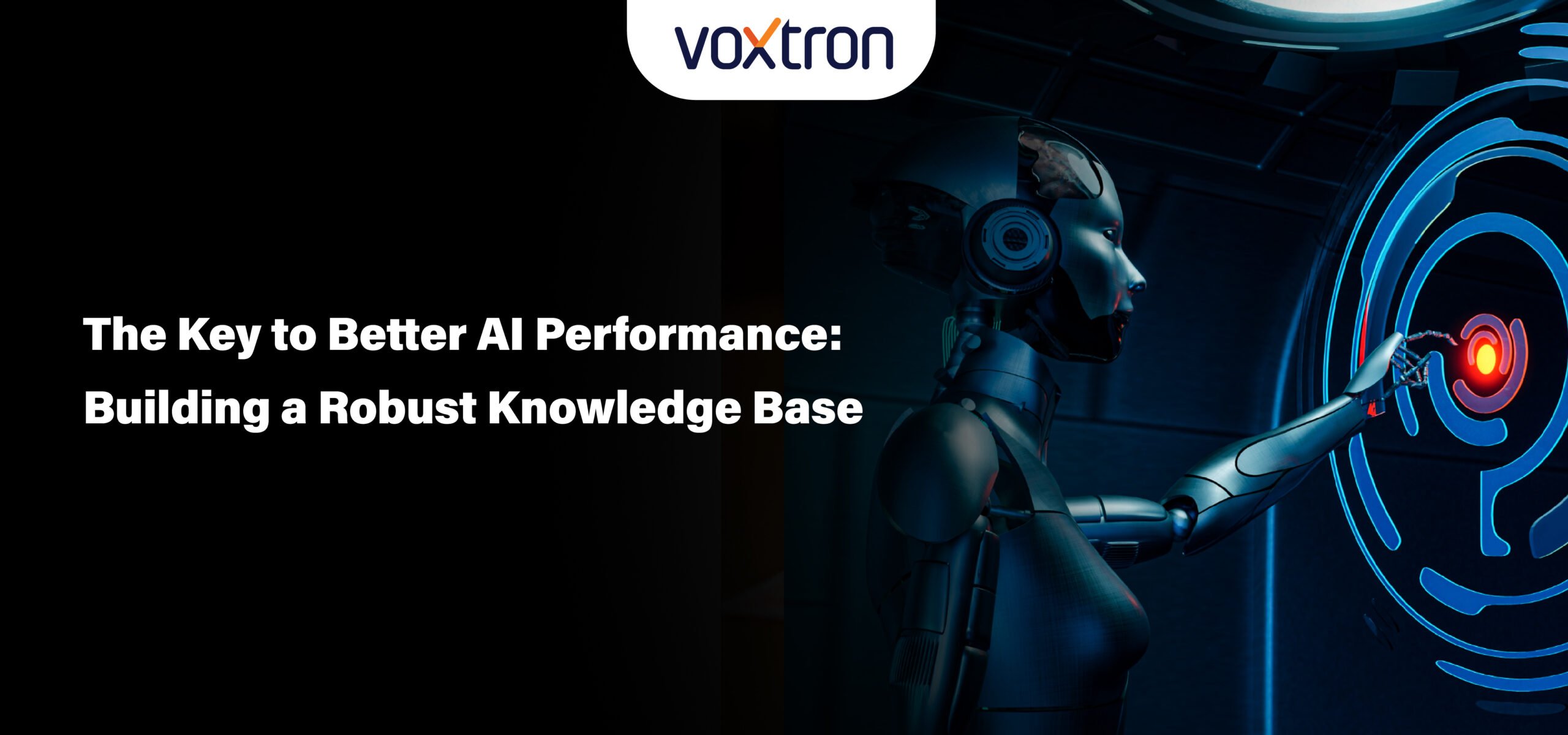
What Should Buyers Look for in the New CCaaS Market?
August 18, 2025
Six Best Practices to Optimize Your CRM for Enhanced Customer Service
September 9, 2025Maximizing ROI with Knowledge AI in Chatbots: A Guide for Modern Enterprises
The global chatbot market is projected to exceed $27 billion by 2030, reflecting the growing demand for intelligent, always-available customer support. In order to meet this demand, enterprises are turning to advanced technology solutions. One such solution is Knowledge AI chatbots.
Adoption of Knowledge AI chatbots: An ROI Imperative
Knowledge AI chatbots represent a new generation of digital assistants that do far more than match keywords or follow rigid scripts. Unlike traditional chatbot models, they don’t just detect keywords. Instead, they combine the power of advanced natural language understanding (NLU), machine learning, and enterprise knowledge integration to deliver efficient customer support.
These intelligent systems can sift through vast volumes of structured and unstructured data such as documents and FAQs to CRM records and knowledge bases. Then, they use the available information to deliver precise, relevant, and conversational answers in real time.
Knowledge AI chatbots can handle multi-turn conversations, interpret nuance, and even learn and adapt over time.
For instance, let us assume that a customer asks about a billing discrepancy from three months ago or needs help understanding cross-product compatibility. A knowledge AI chatbot can guide them just as a skilled human agent would. The added benefit is that it can perform this action at scale.
For contact centers, this means chatbots can resolve more inquiries on their own, offer detailed assistance for complex requests, and escalate seamlessly when human input is required.
The result? Higher customer satisfaction, more efficient operations, and measurable ROI gains.
How Do Knowledge AI Chatbots Work?
Knowledge ai chatbots operate through a multi-step process:
- Understanding Input: Using sophisticated NLP, these chatbots interpret user messages. They identify not just keywords but the underlying intent and relevant entities.
- Contextual Awareness: They remember the conversation history, allowing for multi-turn, context-rich dialogue. This is crucial for addressing complex issues spanning several messages.
- Dynamic Knowledge Retrieval: Their integration with enterprise knowledge bases lets them fetch and synthesize answers from multiple sources. This includes FAQs, internal documents, CRM, and ticketing systems. Hence, their responses are accurate and up to date.
- Continuous Learning: With every interaction, these chatbots learn and adapt by using machine learning algorithms. Thus, they grow more effective over time as they absorb new data and handle varied scenarios.
Knowledge AI vs. Traditional Chatbots: Key Differences
Turn support centers into self-service powerhouses, reducing costs and delivering value instantly with Knowledge AI chatbots.
They differ from traditional chatbots in the following ways:
- Depth of Understanding: While legacy chatbots rely on fixed rules and keyword matching, knowledge AI chatbots grasp nuanced language, understand context, and adapt responses accordingly.
- Adaptability: Knowledge AI chatbots continuously learn from real conversations and update their knowledge base. Meanwhile, traditional models must be manually updated to recognize new queries.
- Personalization: Advanced chatbots deliver conversational, tailored, and multi-turn responses. This enables more natural and satisfying user experiences. On the contrary, traditional bots tend to be rigid, often failing with complex or unfamiliar inputs.
- Return on Investment: By automating complex queries and reducing reliance on human agents, knowledge ai chatbots increase first-contact resolution rates. Also, they free up staff for higher-value work, directly impacting the bottom line.
Optimizing Customer Engagement and Returns: Best Practices for Deploying Knowledge AI Chatbots
To maximize ROI with Knowledge AI chatbots, enterprises should adopt the following strategic moves:
1. Define Clear Business Goals
Before deploying a knowledge AI chatbot, it’s critical to establish what specific outcomes the organization aims to achieve.
Is the primary objective to reduce call center volumes, shorten response times, improve first-contact resolution, or lower support costs?
Accordingly, align the chatbot’s role with clear business KPIs ensures the deployment stays focused and measurable.
2. Centralize and Maintain the Knowledge Base
The effectiveness of a knowledge AI chatbot depends on the accuracy and relevance of the information it draws from. This requires a unified, up-to-date knowledge base that consolidates answers from various departments.
Regular reviews and updates are essential to prevent outdated or inconsistent responses.
3. Prioritize High-Impact Use Cases
Successful deployments often begin by targeting areas with the most immediate and visible value. Focus initially on automating repetitive, low-complexity interactions such as FAQs, order tracking, password resets, or troubleshooting instructions.
These use cases free up human agents to handle more complex issues, generate quick wins for the business, and provide data that can be used to scale the chatbot’s capabilities to other functions.
4. Tailor for Local Context and Language
In regions like the Middle East, understanding and respecting linguistic nuances, dialects, and cultural expectations is vital for chatbot effectiveness.
Training the AI on local language data (including dialectal variations) and region-specific terminology ensures conversations feel natural and relevant.
In sectors like government, banking, or healthcare, reflecting cultural sensitivity builds user trust and improves adoption rates.
5. Integrate Seamlessly with Core Enterprise Systems
For a knowledge AI chatbot to deliver consistent and personalized experiences, it must integrate smoothly with existing enterprise infrastructure. These include CRM platforms, ERP systems, helpdesk tools, and omnichannel communication platforms.
The chatbot must be able to access customer data, past interactions, and business rules in real time, enabling smarter responses and unified customer journeys.
6. Monitor Performance and Continuously Optimize
After chatbot adoption, ongoing ROI depends on actively monitoring key metrics such as resolution rates, escalation frequency, average response time, customer satisfaction, and deflection rate.
Feedback from users and support agents can highlight pain points or training gaps. Regular analysis of this data allows teams to fine-tune intent recognition, expand knowledge coverage, and continually improve the chatbot’s effectiveness over time.
Conclusion: Engage 360’s Knowledge AI-Driven Evolution
As enterprises automate routine queries and AI chatbot market value accelerates, clinging to outdated technology can cause your business to lose customers.
For companies across industries where digital transformation is advancing rapidly, the smart move is to invest in the latest knowledge ai platforms now.
Engage 360 by Voxtron offers core advanced functionalities like the agent portal for real-time assistance, supervisor barge-in for escalations, and a marketing campaign tool for outreach. In its latest evolution, this chatbot further integrates cutting-edge knowledge AI chatbot capabilities to enhance both customer and agent experiences. To learn more about this cutting-edge chatbot solution, contact our team today.




